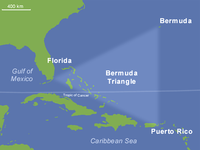A special project code-named Maruta used human beings for experiments. Test subjects were gathered from the surrounding population and were sometimes referred to euphemistically as "logs" (丸太 maruta).[11] This term originated as a joke on the part of the staff because the official cover story for the facility given to the local authorities was that it was a lumber mill.[12]
The test subjects were selected to give a wide cross section of the population and included common criminals, captured bandits and anti-Japanese partisans, political prisoners, and also people rounded up by the Kempetai for alleged "suspicious activities". They included infants, the elderly, and pregnant women.
Vivisection
Prisoners of war were subjected to vivisection without anesthesia.[11][13] Vivisections were performed on prisoners after infecting them with various diseases. Scientists performed invasive surgery on prisoners, removing organs to study the effects of disease on the human body. These were conducted while the patients were alive because it was feared that the decomposition process would affect the results.[11][14] The infected and vivisected prisoners included men, women, children, and infants.[15]Prisoners had limbs amputated in order to study blood loss.[11] Those limbs that were removed were sometimes re-attached to the opposite sides of the body.[11] Some prisoners' limbs were frozen and amputated, while others had limbs frozen then thawed to study the effects of the resultant untreated gangrene and rotting.
Some prisoners had their stomachs surgically removed and the esophagus reattached to the intestines.[11] Parts of the brain, lungs, liver, etc. were removed from some prisoners.[11][13][16]
In 2007, Doctor Ken Yuasa testified to the Japan Times that, "I was afraid during my first vivisection, but the second time around, it was much easier. By the third time, I was willing to do it." He believes at least 1,000 people, including surgeons, were involved in vivisections over mainland China.[17]
Weapons testing
Human targets were used to test grenades positioned at various distances and in different positions.[11] Flame throwers were tested on humans.[11] Humans were tied to stakes and used as targets to test germ-releasing bombs, chemical weapons, and explosive bombs.[11]Germ warfare attacks
Prisoners were injected with inoculations of disease, disguised as vaccinations, to study their effects.[11] To study the effects of untreated venereal diseases, male and female prisoners were deliberately infected with syphilis and gonorrhea, then studied.[11] Prisoners were infested with fleas in order to acquire large quantities of disease-carrying fleas for the purposes of studying the viability of germ warfare[citation needed].Plague fleas, infected clothing, and infected supplies encased in bombs were dropped on various targets. The resulting cholera, anthrax, and plague were estimated to have killed around 400,000 Chinese civilians.[11] Tularemia was tested on Chinese civilians.[18]
Unit 731 and its affiliated units (Unit 1644, Unit 100, et cetera) were involved in research, development, and experimental deployment of epidemic-creating biowarfare weapons in assaults against the Chinese populace (both civilian and military) throughout World War II. Plague-infested fleas, bred in the laboratories of Unit 731 and Unit 1644, were spread by low-flying airplanes upon Chinese cities, coastal Ningbo in 1940, and Changde, Hunan Province, in 1941. This military aerial spraying killed thousands of people with bubonic plague epidemics.[19]
Other experiments
Prisoners were subjected to other torturous experiments such as being hung upside down to see how long it would take for them to choke to death, having air injected into their arteries to determine the time until the onset of embolism, and having horse urine injected into their kidneys.[11]
Other incidents include being deprived of food and water to determine the length of time until death, being placed into high-pressure chambers until death, having experiments performed upon prisoners to determine the relationship between temperature, burns, and human survival, being placed into centrifuges and spun until dead, having animal blood injected and the effects studied, being exposed to lethal doses of x-rays, having various chemical weapons tested on prisoners inside gas chambers, being injected with sea water to determine if it could be a substitute for saline and being buried alive.[20][citation needed]
Biological warfare
Japanese scientists performed tests on prisoners with plague, cholera, smallpox, botulism, and other diseases.[21] This research led to the development of the defoliation bacilli bomb and the flea bomb used to spread the bubonic plague.[22] Some of these bombs were designed with ceramic (porcelain) shells, an idea proposed by Ishii in 1938.
These bombs enabled Japanese soldiers to launch biological attacks, infecting agriculture, reservoirs, wells, and other areas with anthrax, plague-carrier fleas, typhoid, dysentery, cholera, and other deadly pathogens. During biological bomb experiments, scientists dressed in protective suits would examine the dying victims. Infected food supplies and clothing were dropped by airplane into areas of China not occupied by Japanese forces. In addition, poisoned food and candies were given out to unsuspecting victims and children, and the results examined.


